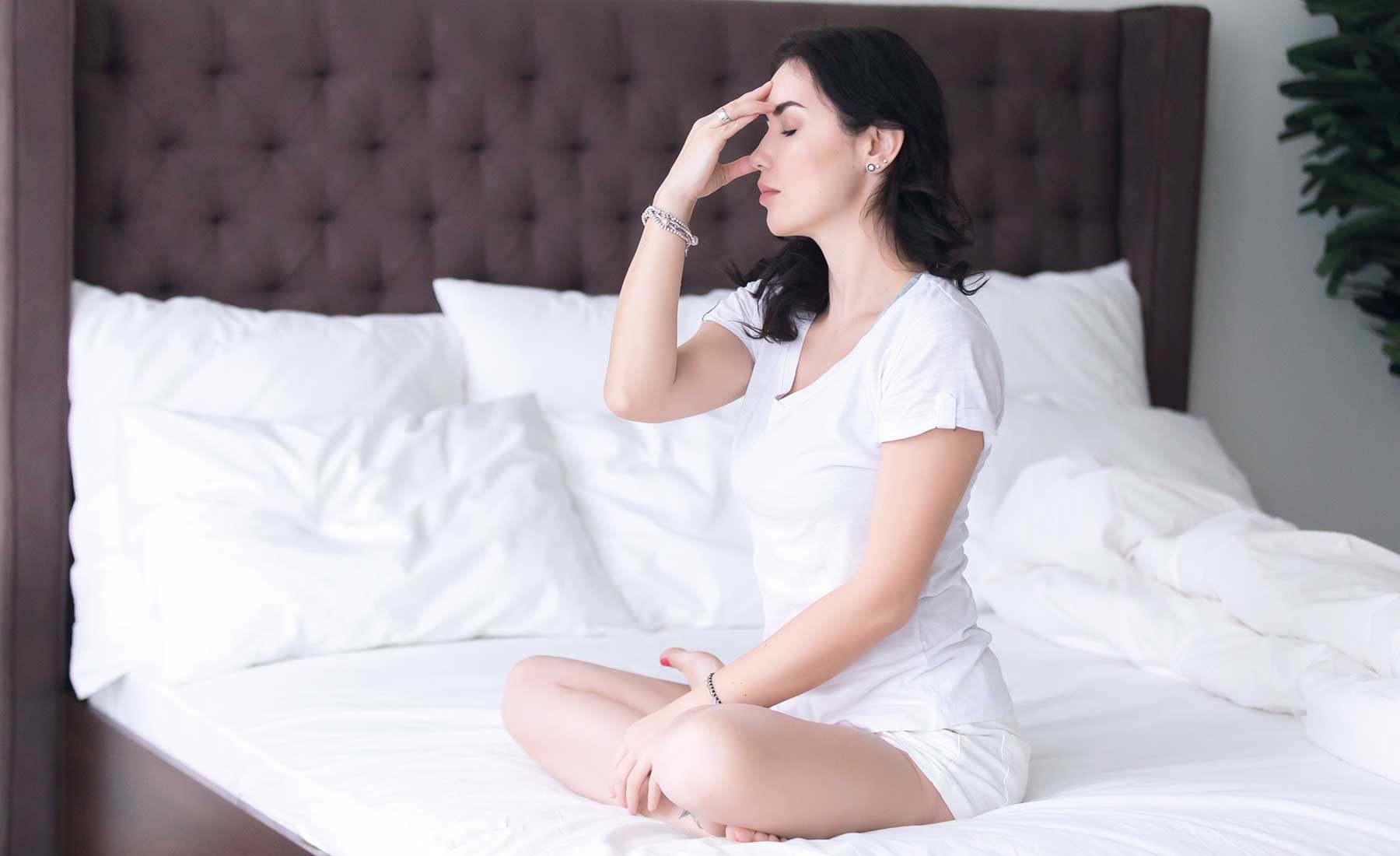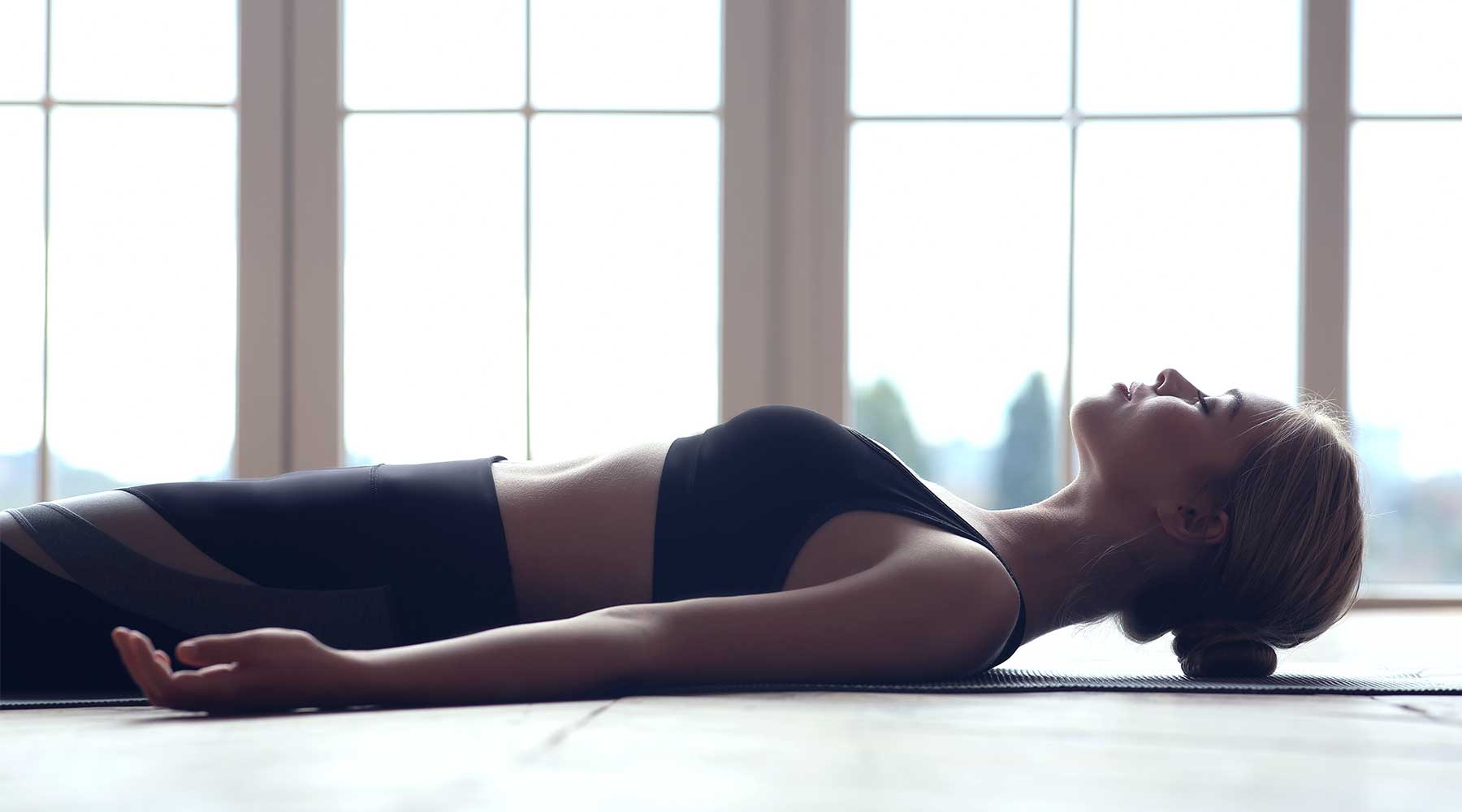
Breathing exercises to fall asleep
Breathe in, breathe out – fall asleep! Calming breathing techniques can help you relax and support you in falling asleep in the evening. We'll show you various breathing exercises that are particularly well-suited for falling asleep stress-free.
Table of contents
- Relaxation and calming before bedtime
- The best breathing exercises for falling asleep
- Deep, conscious breathing
- Alternate breathing
- Box breathing
- The 4-7-8 technique
- Conclusion
1. Relaxation and calming before going to bed
stress Stress and tension often prevent us from fully switching off and falling asleep in the evening. Therefore, it's important that we relax sufficiently, especially in the last few hours before bedtime—for example, with certain breathing exercises.
Calming breathing techniques are among the most effective methods for combating stress, as our breathing is not only fundamental to our bodily functions but also closely connected to our mind. Controlled, deep breathing ensures an adequate supply of oxygen to our body and brain, regulates blood pressure and the cardiovascular system, and has a positive effect on the areas of our nervous system responsible for relaxation. This can help us calm down and fall asleep more quickly after a stressful day.
Breathing exercises can also be easily integrated into your daily routine or evening routine and can also be easily applied in acute stress situations. We will show you a few simple exercises that can be an effective aid against stress and Difficulty falling asleep have proven successful. However, you'll have to try it out for yourself to determine which method ultimately helps you best and leads to fatigue.
2. The best breathing exercises for falling asleep
#1 Deep, conscious breathing
Fundamental to the success of all breathing techniques is learning to focus on your breathing and truly inhale and exhale deeply, without losing focus on what's inside. Generally, you should try to breathe through your nose rather than your mouth. When you breathe through your nose, the incoming air is warmed, purified, and humidified, and you can absorb up to 20% more oxygen than when breathing through your mouth.
#2 Alternate Nostril Breathing (Nadi Shodana Pranayama)

Alternate nostril breathing, also known in yoga as Nadi Shodana Pranayama, serves to calm and balance internal energetic currents. The relaxing effect of this breathing technique has been proven in various studies and is a simple way to relieve nervousness or tension before sleep.
Here's how: With alternate nostril breathing, you breathe alternately through your left and right nostrils. Use your thumb to close your right nostril and breathe in slowly and deeply through your left nostril. Hold your breath for about four seconds, then release your thumb and breathe out through your right nostril. Then, close your left nostril, breathe in through your right, and let the air out through your left nostril. Simply put: Inhale on the left, hold, exhale on the right. Inhale on the right, hold, exhale on the left, and repeat. You should repeat this alternating process for a few minutes.

#3 Box breathing
Box breathing is particularly suitable in moments of acute anxiety and stress, as it quickly and easily counteracts built-up stress and tension. This breathing technique can also be used before bedtime. can be very helpful and lead to more relaxation and better sleep.Because of its regular four-beat rhythm, it is also called “square breathing”.
Here's how: Control your breath flow using a simple four-count rhythm: Inhale deeply for four seconds, hold your breath for four seconds, exhale deeply for four seconds, and pause briefly for four seconds. Repeat this process as often as you like, or until you feel sufficient relaxation in your body and mind.

#4 The 4-7-8 breathing
The 4-7-8 technique is a well-known breathing technique that is said to help combat anxiety and panic attacks and also facilitate sleep. The exercise involves focusing on your breathing rhythm to bring more oxygen into and more carbon dioxide out of the body. It can be performed while sitting, lying down, or standing, for example, immediately before sleeping or immediately after waking up.
Here's how: Breathe about 4 Breathe deeply through your nose for a few seconds, hold your breath 7 seconds and then breathe 8 Exhale through your mouth for 10 seconds. You should repeat this sequence at least four times and ideally perform the entire exercise regularly.

3. Conclusion
-
Healthy, controlled breathing has a positive effect on physical and mental well-being, promotes relaxation and makes it easier to fall asleep.
-
Special breathing techniques such as alternate nostril breathing (Nadi Shodana Pranayama), box breathing or the 4-7-8 technique help to relieve stress and tension and thus enable good sleep.
Best wishes and relax!



Leave a comment
This site is protected by hCaptcha and the hCaptcha Privacy Policy and Terms of Service apply.